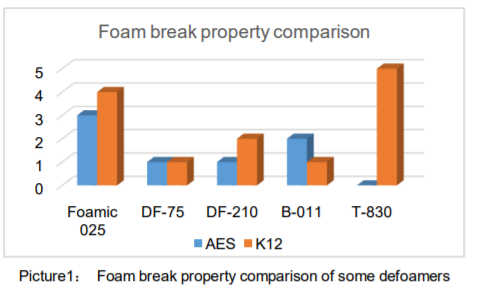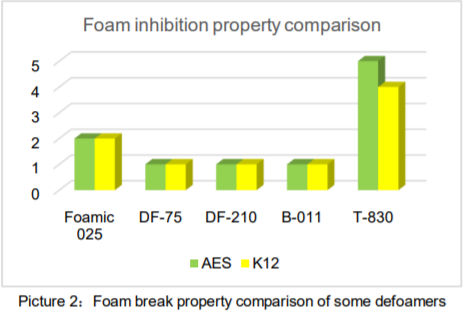Enhanced TDS
Knowde-enriched technical product data sheet
Identification & Functionality
- CASE Ingredients Functions
- Fluids & Lubricants Functions
- Industrial Additives Functions
- Technologies
- Product Families
- Chemical Component
Organic polymer
Features & Benefits
- Labeling Claims
- Characteristics
- Silicone and mineral oil free;
- Without hydrophobic particles;
- Good foam break effect;
- Lasting antifoaming effect;
- Without causing surface problems as pinhole and shrinkage;
- Specially suitable to eliminate difficult foam caused by anion matters;
- APEO free
Applications & Uses
- Markets
- Applications
- Applicable Processes
- Fluids & Lubricants Type
- Coating Type
- Fluids & Lubricants End Use
- Industrial Additives End Use
- Recommended Applications
- Water-based coatings
- Printing chemicals
- Adhesives and sealants
- Emulsion polymerization
- Textile finishing
- Metal working fluids
- Water treatment
- Operation Proposals
- Add in each stage in production of water-based products;
- Do not dilute defoamers to avoid influencing defoaming property;
- If defoamer appears freezing or layering, it should be melted or mix even at first;
- After adding defoamer, it should be stirred completely to make sure good dispersion of defoamer;
- Suggested dosage is 0.2-1%;
- Advise gradient test;
Properties
- Physical Form
- Appearance
- Yellow To dark Yellow Liquid
- Sparingly soluble in
- Water
- Typical Properties
Value Units Test Method / Conditions Active Matter Content 100.0 % -
Regulatory & Compliance
- Certifications & Compliance
Technical Details & Test Data
- Performance Evaluation
- Foam break experiment
- Take 100ml 0.1% foaming solution into 1000ml measuring cylinder,then open air pump to bubble to 1000ml and turn off air pump;
- Take 100 ul defoamer into measuring cylinder and record time of foam elimination.
- Antifoaming experiment
- Operate as foam break experiment;
- After foam disappearing, bubble once more, record the time the foam increases up to 1000ml;
- Operate (2) repeatedly and take the average time.
Scoring standard of foam break: 5 point, <30s is 5 point; 30-60s is 4 point; 60-90s is 3 point;1.5-3 mins is 2 point; 3-5 minutes is 1 point; other time is 0 point;
Standard Score <30s 5 30-60s 4 60-90s 3 90-180s 2 180-300s 1 Other time 0 Scoring standard of foam inhibition: 5 point, >30 mins is 5 point; 10-30 mins is 4 point; 5-10 mins is 3 point;1-5 mins is 2 point;; < 1 min is 1 point;
Standard Score >1800s 5 600-1800s 4 300-600s 3 60-300s 2 <60s 1 - Foam break experiment
- Foaming Agent Preparation
Take 1g foaming agent into 1000ml breaker, then add water to dilute and prepare foaming agent solution with 1% active content; Stir10 min and then add water to dilute as 0.1% solution for reservation.
- Property Comparison


Packaging & Availability
- Packaging Type
- Packaging
- 25L/plastic drum
- 220L/iron drum
Storage & Handling
- Storage
As liquid material, this product should be sealed and placed in a dry, cool, well-ventilated place at room temperature away from fire source.